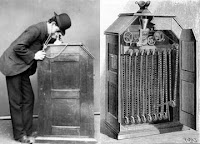Whilst analysing a whole series of Russian folk- tales prop found some common similarities in the character roles in which he later used to develop his character theory. He suggested that every story/narrative consists of a variety of different character types. This includes:
- The villain - disputes with or goes against the hero in some way.
- The dispatcher - much like an informative, this is the character who reveals the villains intent and makes the hero aware of this.
- The helper - also known as the loyal sidekick, accompanies the hero on his conquest
- Princess/prize - somebody in which is seen as 'just out of reach' within the majority of the sequence e.g. kept from marrying the hero due to outside forces. However, sun a character is traditionally retrieved/saved by the hero near the end of the narrative; therefore resulting in the defeat of the villain.
- The donor - the character who assists the hero through preparation, commonly a magical object.
- False hero - takes credit for the actions/bravery of the hero in order to get to the princess/prize.
Barthes Theory - Narrative Codes
Barthe suggested that within a narrative there would be one or more codes that describe the meaning of the text. He also stated that texts may be presented as 'open' (the text may be perceived in many ways and there may be multiple interpretations) or 'closed' (the is only one way in which the text can be unravelled). These are the 5 codes:
- Hermeneutic/enigma code -
- Proairetic/action code -
- Semantic code -
- Symbolic code -
- Referential code -
Todorov - Equilibrium
Strauss- Binary Opposition


